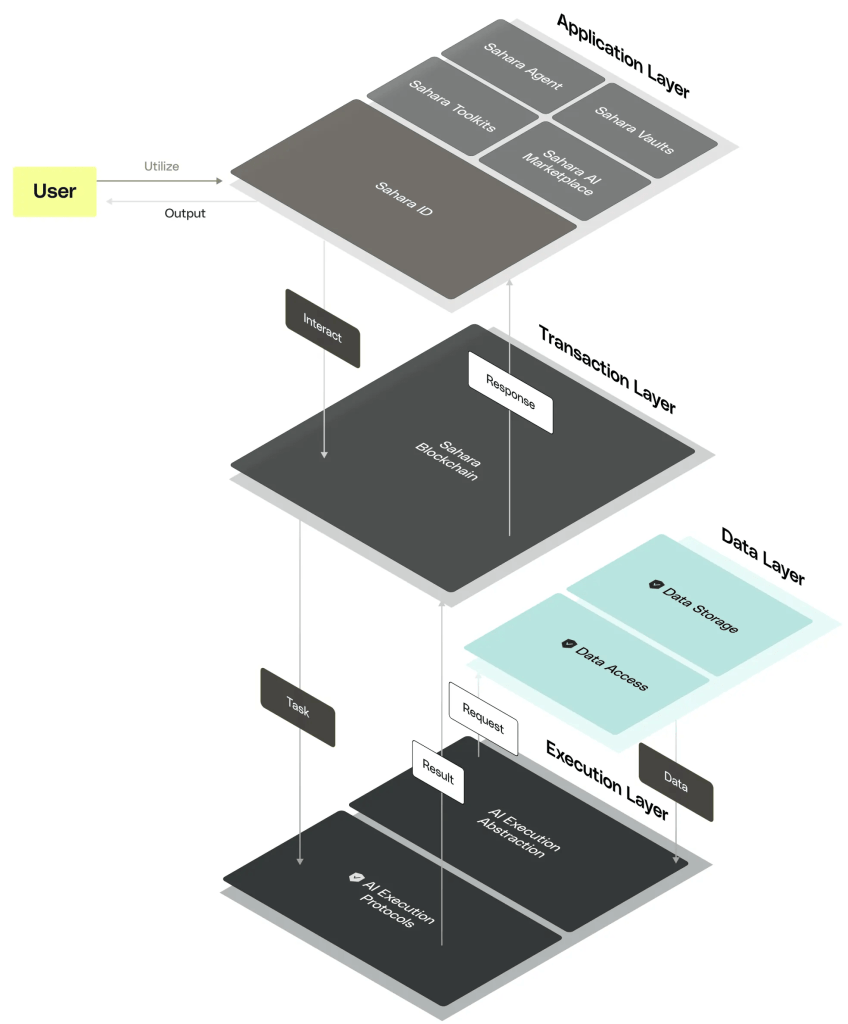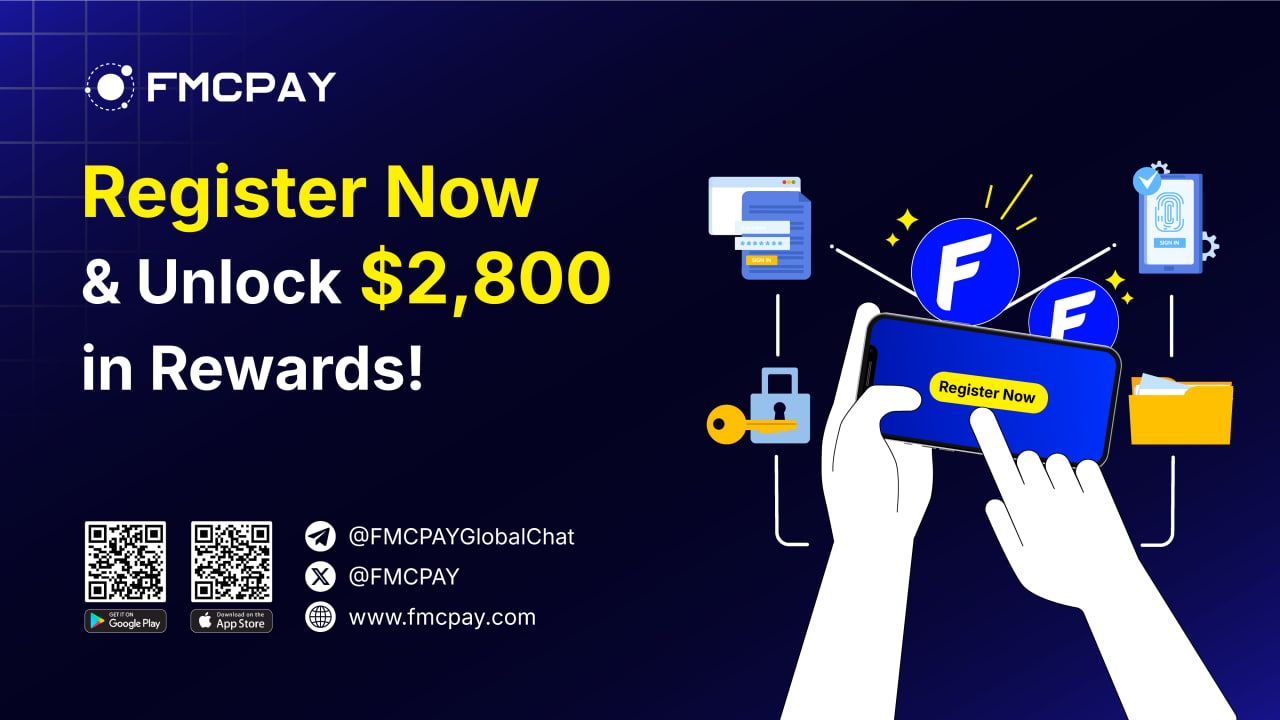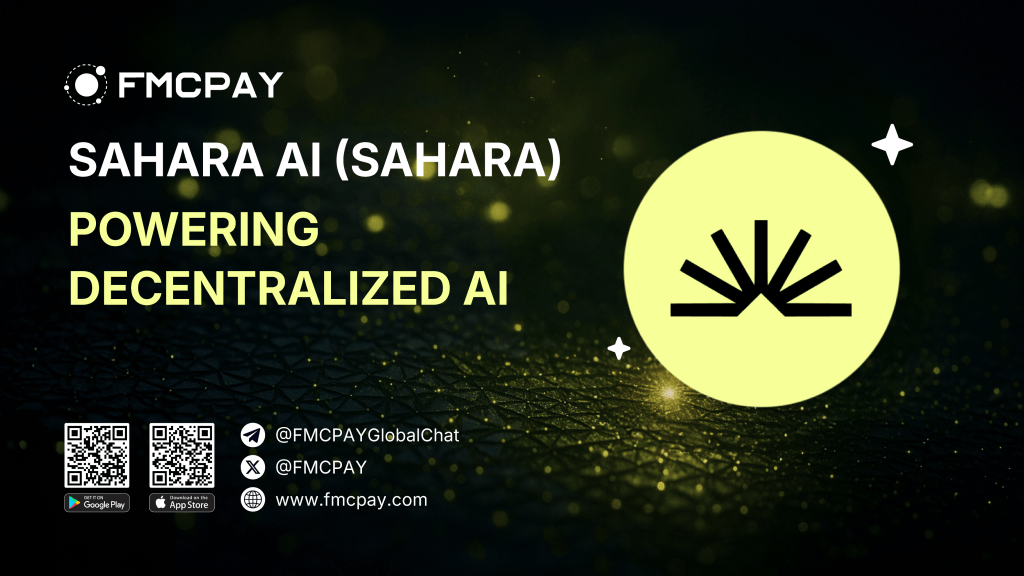In an era where artificial intelligence is increasingly centralized by a handful of tech giants, Sahara AI (SAHARA) is emerging as a disruptive force aimed at decentralizing the future of intelligent systems. By leveraging a blockchain-native architecture, Sahara AI (SAHARA) redefines how AI data is owned, monetized, and governed shifting power from corporations to communities.
1. What Is Sahara AI (SAHARA)?
As artificial intelligence becomes increasingly embedded in our daily lives, concerns are growing over its centralization in the hands of a few tech giants. Sahara AI emerges as a groundbreaking response to this imbalance a decentralized AI platform built on blockchain that empowers individuals and communities to build, own, and benefit from AI.
1.1. Sahara AI Empowers Community-Driven AI Development
Sahara AI is a decentralized platform that allows anyone from developers and data scientists to everyday users to create, share, and profit from AI assets like datasets, machine learning models, and autonomous agents.
All contributions are securely recorded on-chain, ensuring transparent ownership, traceable attribution, and fair revenue sharing through a permissionless royalty system. This eliminates reliance on centralized intermediaries and ensures that creators are rewarded whenever their AI assets are used in products, research, or commercial applications.
1.2. Sahara AI Protects Privacy and Aligns Incentives
A key strength of Sahara AI lies in its commitment to privacy and data protection. By leveraging cutting-edge cryptographic techniques like zero-knowledge proofs and end-to-end encryption, the platform enables users to contribute sensitive data such as in healthcare or finance without compromising confidentiality.
Beyond infrastructure, Sahara AI offers a complete ecosystem including a developer hub, decentralized AI marketplace, and a token-powered incentive structure built around the $SAHARA token. This framework not only drives long-term collaboration but also gives the community a voice in platform governance and direction.
2. The Three Pillars of Sahara AI (SAHARA)
The Sahara AI (SAHARA) ecosystem is built on three core pillars: Sovereignty & Provenance, AI Utility, and a Collaborative Economy. These pillars work in harmony to create a decentralized infrastructure where developers, data contributors, and innovators can collaborate, contribute, and earn in a fair and transparent environment. Through its blockchain-native design, Sahara AI (SAHARA) is transforming how AI is created, owned, and shared across the Web3 landscape.

Pillar 1: Sovereignty & Provenance
At the heart of Sahara AI lies a strong belief in decentralized ownership and transparent attribution. This pillar ensures that all AI assets including datasets, models, and code are openly governed and immutably recorded on-chain.
Key Features:
-
Decentralized Ownership: In the Sahara AI network, no single entity holds control. AI assets are governed by the community, with decisions made via decentralized autonomous organizations (DAOs).
-
On-chain Provenance: Every action from uploading datasets to training models is logged on the Sahara AI blockchain, enabling full traceability and verifiable contribution history.
-
Interoperable AI Assets: Sahara AI ensures that all AI components are compatible across various systems, fostering cross-platform collaboration.
-
Auditable AI Lifecycles: Users and developers can trace the full journey of any AI asset, increasing trust and transparency in how AI is built and deployed.
Pillar 2: AI Utility
Sahara AI offers a comprehensive infrastructure stack designed specifically for AI development, deployment, and usage in a secure, decentralized environment. This pillar empowers participants at every technical level to take part in the AI economy.
Key Features:
-
AI-Native Layer-1 Blockchain: The Sahara AI platform runs on its own custom blockchain optimized for AI-specific tasks, ensuring scalability, efficiency, and low transaction costs.
-
Developer-Friendly Tools: Sahara AI includes intuitive tools and interfaces, making it easy for both seasoned developers and newcomers to build and deploy AI models.
-
Privacy-Preserving Protocols: Data security is a core principle. Sahara AI uses advanced cryptographic solutions to protect user data and model integrity.
-
High-Performance Infrastructure: From training complex neural networks to supporting real-time AI applications, Sahara AI is built to scale with performance demands.
Pillar 3: Collaborative Economy
With Sahara AI, a new kind of AI economy is emerging one that is permissionless, inclusive, and value-aligned. This pillar creates a trustless environment where contributors are rewarded based on transparent, on-chain metrics.
Key Features:
-
Fair Compensation: Contributors to the Sahara AI ecosystem whether providing data, building models, or reviewing outputs receive tokenized rewards linked directly to their contributions.
-
Open Participation: Sahara AI welcomes all participants, from solo developers to global organizations, making AI innovation accessible to all.
-
Trustless Monetization: Monetizing AI assets within Sahara AI is automatic and secure, using smart contracts to ensure reliable and transparent revenue distribution.
-
Sustainable Growth Model: Economic incentives are aligned with ecosystem health, ensuring that Sahara AI grows in a balanced, community-first manner.
3. Tokenomics and Airdrop Momentum
The token economy of Sahara AI (SAHARA) is thoughtfully designed to drive sustainable growth, reward genuine contribution, and cultivate a fully decentralized AI ecosystem. By aligning incentives with participation, Sahara AI (SAHARA) empowers builders, researchers, data providers, and users to grow alongside the platform.
3.1. Token Distribution Overview
-
Total Supply: 10 billion SAHARA tokens.
-
64.25% of the total supply is allocated toward ecosystem development and community incentives, making it one of the most community-heavy allocations in the Web3 x AI landscape. This sizable share is reserved for rewarding a wide range of contributions from uploading datasets and training models to participating in governance and platform testing. The goal is to promote long-term engagement and ensure that value flows back to those who help build the ecosystem.
-
8.15% is earmarked for a strategic airdrop via Binance BUIDLpad, distributed to Ethereum users who have interacted with testnets, contributed data, or participated in early Sahara AI (SAHARA) community efforts. This knowledge-based airdrop represents a more intentional approach to token distribution, recognizing meaningful engagement rather than rewarding passive holders or bots. It not only creates awareness but also builds a user base of participants who already understand and support the project.
-
1.25% is allocated to the Binance HODLer Airdrop, distributed to BNB holders through Binance Simple Earn. This campaign played a vital role in driving early momentum, introducing SAHARA to a global retail audience and creating immediate liquidity demand in the lead-up to exchange listings.
3.2. Strategic Design for Sustainable Adoption
This multi-pronged token strategy reflects Sahara AI (SAHARA)’s core philosophy: decentralization is not just a technical choice — it’s a distribution of power, opportunity, and ownership. Rather than over-allocating to private investors or insiders, the platform ensures that the majority of tokens support real users and ecosystem participants.
This model has already started to show results. The buzz generated from the airdrops, combined with listings on major exchanges like Binance, Bithumb, Upbit, and Bybit, has dramatically increased token awareness, trading volume, and community size setting a strong foundation for long-term adoption.
As the platform moves toward mainnet, staking, and on-chain monetization, this broad and organic token distribution will serve as a powerful engine for user growth and ecosystem resilience.
In short, the SAHARA token is more than just a utility asset it is a key coordination tool that brings together developers, data providers, researchers, and AI innovators to build a transparent, decentralized, and community-led future for artificial intelligence.
4. Multichain Infrastructure & Roadmap Ahead
Sahara AI (SAHARA) is laying the groundwork for a robust, scalable, and decentralized AI ecosystem one that is accessible to users across networks and designed for long-term sustainability.

4.1. Multichain Deployment for Broader Reach
To serve a diverse and global user base, Sahara AI (SAHARA) is already live on both Ethereum and BNB Chain two of the most widely adopted and liquidity-rich blockchains in the Web3 space. This multichain strategy is not just about technical compatibility; it’s a deliberate move to maximize accessibility, enhance interoperability, and ensure seamless asset flow across ecosystems.
By leveraging both chains, Sahara AI (SAHARA) can:
-
Reduce transaction costs and congestion.
-
Broaden exposure to multiple user communities.
-
Increase composability with dApps, DeFi tools, and existing infrastructure.
Core infrastructure layers include:
-
Data Services Platform: A robust interface for uploading, managing, validating, and licensing AI-ready datasets, with full traceability on-chain.
-
AI Developer Hub: A powerful environment where developers and researchers can build, fine-tune, and deploy machine learning models collaboratively.
-
Decentralized AI Marketplace: A permissionless marketplace for exchanging datasets, models, compute resources, and AI services all linked to smart contract-based payments and royalty enforcement.
What makes Sahara AI (SAHARA) distinct is that all components are built with on-chain provenance, licensing frameworks, and monetization mechanisms. Every dataset or model carries its own history and license terms, and creators are compensated instantly and transparently whenever their assets are used.
This infrastructure not only empowers technical contributors but also enables broader adoption from businesses, academic institutions, and open-source communities.
4.2. Mainnet & Governance Roadmap
Looking forward, Q3 2025 will mark a transformational milestone: the launch of the Sahara AI (SAHARA) mainnet. This upgrade will usher in a new phase of functionality, moving beyond testing environments into a fully operational, community-driven AI ecosystem.
The mainnet release will activate several critical modules designed to decentralize governance, incentivize long-term participation, and operationalize the AI economy.
Key features include:
-
On-Chain Governance Tools: SAHARA token holders will gain the power to vote on protocol upgrades, funding proposals, ecosystem grants, and more. This ensures that development priorities reflect community needs rather than centralized directives.
-
Staking Functionality: Token holders will be able to stake SAHARA to help secure the network and earn rewards, encouraging active participation and network resilience.
-
Royalty & Licensing Systems: Smart contracts will automatically manage the licensing and monetization of AI assets, ensuring creators receive fair compensation every time their datasets or models are accessed, reused, or built upon.
Together, these features create the economic and governance backbone for Sahara AI (SAHARA), enabling trustless collaboration, community control, and real-world scalability.
4.3. A Scalable Vision for Decentralized AI
By combining multichain infrastructure, modular architecture, and a clearly defined governance framework, Sahara AI (SAHARA) is building more than just a platform it’s engineering a self-sustaining ecosystem for decentralized artificial intelligence.
This strategic foundation ensures Sahara AI (SAHARA) is well-positioned to:
-
Support a growing ecosystem of developers, enterprises, and contributors.
-
Expand into new verticals such as healthcare, robotics, finance, and education.
-
Set new standards for transparency, attribution, and monetization in the AI industry.
As the mainnet launch approaches, Sahara AI (SAHARA) is on track to redefine what it means to build, own, and collaborate on intelligent systems — openly, securely, and at scale.
5. What to Watch Next for Sahara AI
As the convergence of Web3 and artificial intelligence gains momentum, Sahara AI (SAHARA) stands at the frontier of a new technological paradigm — one where AI is no longer centralized, opaque, or monopolized. Instead, Sahara AI (SAHARA) envisions a decentralized future where the creation, ownership, and monetization of AI assets are governed transparently and collectively.
With a fast-growing community, strong institutional support, and key infrastructure already live, the coming months represent a pivotal window of opportunity. A series of major developments are set to shape not only the trajectory of Sahara AI (SAHARA) itself but also the broader adoption of decentralized AI solutions across industries.
Introducing $SAHARA — the native utility token of Sahara AI.
Designed for real-world function, $SAHARA powers a new economic model for AI. One that is collaborative, open, and built to reward real contributors.
Utility, distribution, and claim details below 🧵👇 pic.twitter.com/A3MYsHO1Po
— Sahara AI 🔆 (@SaharaLabsAI) June 25, 2025
5.1. Mainnet Activation & Core Feature Launch
The upcoming mainnet launch in Q3 2025 is one of the most highly anticipated milestones for Sahara AI (SAHARA). This event marks the platform’s evolution from a promising prototype into a fully operational decentralized AI infrastructure. Once live, the mainnet will unlock the tools necessary for developers, contributors, researchers, and enterprises to actively build and benefit from the ecosystem.
Key features going live with the mainnet:
-
Staking Mechanisms: Token holders will be able to stake SAHARA tokens to secure the network and earn rewards. This introduces a sustainable incentive structure that aligns long-term participation with the platform’s economic health and governance.
-
Royalty & Licensing Infrastructure: Smart contracts will automate the distribution of royalties and licensing fees, ensuring contributors whether dataset curators or model developers receive fair and transparent compensation every time their assets are used.
-
Real-World Use Cases: With the infrastructure fully deployed, Sahara AI (SAHARA) opens the door for real-world implementation. AI assets can be monetized across sectors like healthcare (for diagnostic models), education (for intelligent tutoring systems), logistics (for optimization models), and more demonstrating not just technical innovation, but practical utility.
The mainnet will serve as a powerful signal to the market that Sahara AI (SAHARA) is ready for scale. It also reinforces the platform’s foundational principle: value should flow to creators, not centralized intermediaries.
5.2. Exchange Listings, Governance, and Strategic Partnerships
While the mainnet forms the technical backbone, several external developments will help elevate Sahara AI (SAHARA) to a broader audience and solidify its position within the crypto and AI industries.
Key developments to watch:
-
Exchange Listings: Following its airdrops and pre-market excitement, additional listings on leading exchanges such as Binance, Upbit, and Bybit are expected to further improve token liquidity and accessibility. These listings could also drive demand from retail and institutional investors, particularly those seeking exposure to AI-focused Web3 projects.
-
On-Chain Governance Tools: The rollout of decentralized governance mechanisms will enable token holders to propose, vote on, and implement protocol upgrades. This shift towards community-led decision-making reinforces Sahara AI (SAHARA)’s ethos of decentralization and ensures its evolution reflects the needs of real users.
-
Strategic Partnerships: Collaborations with AI research labs, robotics companies, academic institutions, and enterprise solution providers are likely to validate the platform’s real-world utility. These partnerships could help Sahara AI (SAHARA) expand into specific verticals and build bridges between decentralized AI infrastructure and traditional industries.
Together, these ecosystem developments will transform Sahara AI (SAHARA) from a promising concept into a viable, usable, and widely adopted platform one that truly delivers on the promise of decentralized artificial intelligence.
5.3. From Vision to Scalable Reality
These upcoming milestones including the mainnet launch, expanded exchange listings, governance rollout, and strategic industry partnerships — form a comprehensive and interconnected growth engine for Sahara AI (SAHARA). Each development strengthens a key dimension of the ecosystem: technical readiness, market reach, community participation, and real-world adoption.
The mainnet launch will mark the activation of the platform’s full functionality, enabling users to interact with the Sahara AI infrastructure in a live, permissionless environment. From staking and voting to licensing and monetizing AI assets, contributors will be able to engage with the ecosystem in a way that is both impactful and rewarding.
At the same time, expanding listings on major exchanges such as Binance, Upbit, Bybit, and Bithumb will provide much-needed liquidity and global visibility crucial for attracting a diverse participant base across retail, institutional, and developer communities.
Meanwhile, the introduction of on-chain governance mechanisms will cement Sahara AI (SAHARA)’s decentralized ethos. Token holders will gain real influence over the protocol’s future from deciding on ecosystem grants to shaping long-term platform direction. This not only decentralizes decision-making but also creates a strong alignment between platform success and community involvement.
Finally, strategic partnerships with academic institutions, AI labs, and enterprise players will help translate the platform’s technical vision into real-world use cases. These collaborations will validate the infrastructure’s utility in fields such as healthcare, education, logistics, and robotics — providing proof points that Sahara AI (SAHARA) is not just visionary, but practical and scalable.
Final Takeaway
Sahara AI (SAHARA) is far more than just another Web3 token it represents a bold, next-generation infrastructure project at the intersection of decentralized AI, blockchain-based governance, and community-powered innovation. By enabling transparent ownership, traceable contributions, and fair monetization of AI assets, Sahara AI (SAHARA) is laying the groundwork for a new kind of AI economy one that is open, inclusive, and built to scale.
Backed by major investors, supported by strong tokenomics, and driven by a clear and visionary roadmap, Sahara AI (SAHARA) is well-positioned to become a foundational layer in how intelligent systems are created, owned, and deployed in the decentralized future.
The project is currently experiencing remarkable growth, as evidenced by its rapid-fire listings on major global exchanges including Binance, Bithumb, Upbit, and Bybit. This wave of adoption not only boosts liquidity and accessibility for SAHARA tokens, but also signals strong market confidence in the project’s long-term potential.
Stay tuned with FMCPAY News for real-time updates on Sahara AI (SAHARA)’s mainnet launch, staking programs, and global ecosystem partnerships.

